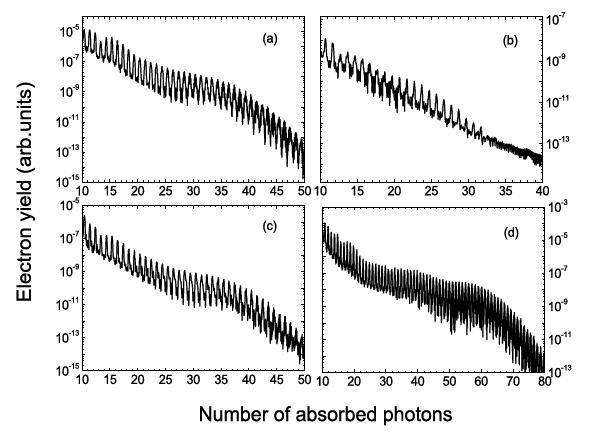Scaling and re-scaling are powerful tools for analyzing various physical phenomena. Searching for new scaling laws and applying these laws are interesting research topics and possess both fundamental importance and practical applications. If experiments can be performed in a re-scaled way, not only the experimental conditions will be greatly eased, but also the energy and the material consumptions will be greatly reduced. Many discussions have been devoted to scaling laws in treating atoms and molecules interacting with intense laser fields. Most studies of scaling relations of high-order harmonic generation in intense laser fields employed numerical methods. Many scaling relations on the wavelength of the driving laser field were disclosed by numerical methods while the deeper physical understandings still remain open. Thus, the theoretical study of scaling laws from basic physics relations is still needed with immediate applications.
In December this year, researchers at State Key Laboratory of High Field Laser Physics, Shanghai Institute of Optics and Fines Mechanics, Chinese Academy of Sciences (SIOM, CAS) established the scaling law of photoelectron energy spectra including the re-scattered photoelectrons.The scaling law used to classify photoelectron angular distributions (PADs) is now extended to photoelectron kinetic energy spectra.Researchers present the detailed verifications of the scaling law by analytical and numerical methods. They show that the scaling law working for photoelectron momentum spectra can be well extended to the photoelectron energy spectra. The well-extended scaling relation for photoelectron four-momentum spectra applies for both directly ionized and re-scattered photoelectrons. Re-scaling experimental input parameters without loosing the physical essence with this scaling law may ease the experimental conditions and reduce the material and the energy consumptions in the experiments.
The scaling law can be used to obtain the necessary reference to extract detailed structure information of the targets. This has potential applications in the study of molecules. This work was published in recent issue of OPTICS EXPRESS. 19(21). 2011:20851.
 |
|
Fig. The kinetic energy spectra of photoelectrons calculated by the TDSE method: (a)is for argon atoms in laser field of wavelength 800nm and intensity 6.80×1013W/cm2;(b)-(d) are calculated spectra for a model atom with binding energy 31.52 eV irradiated by laser field of wavelength 400 nm and intensity 2.72×1014W/cm2(b); 5.44×1014W/cm2(c); 1.09×1015W/cm2(d). For convenience of comparison, the abscissa is plotted in the unit of ω.(Image by SIOM) |